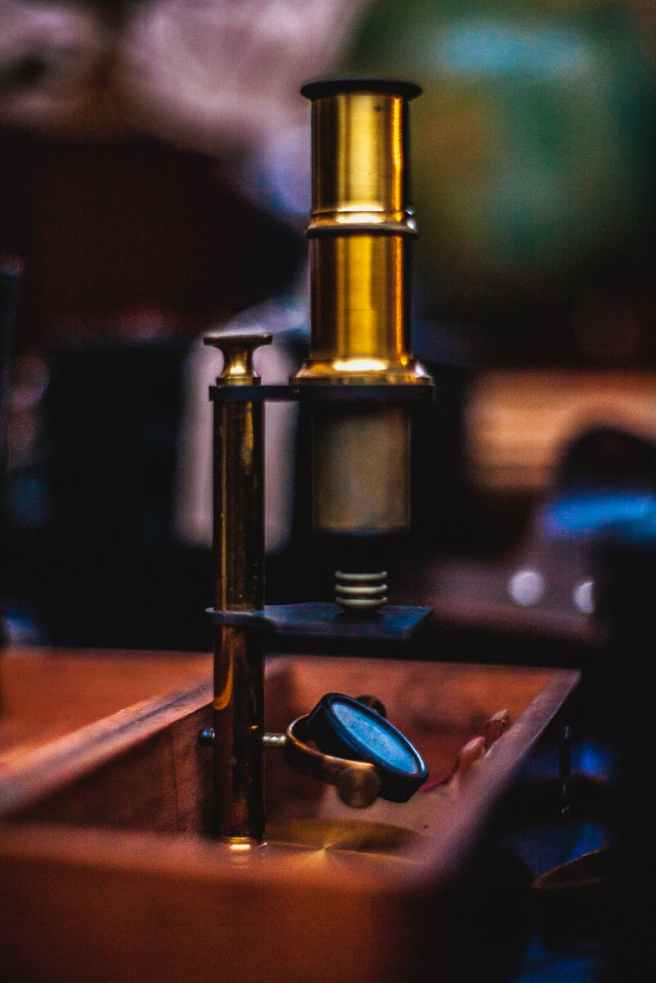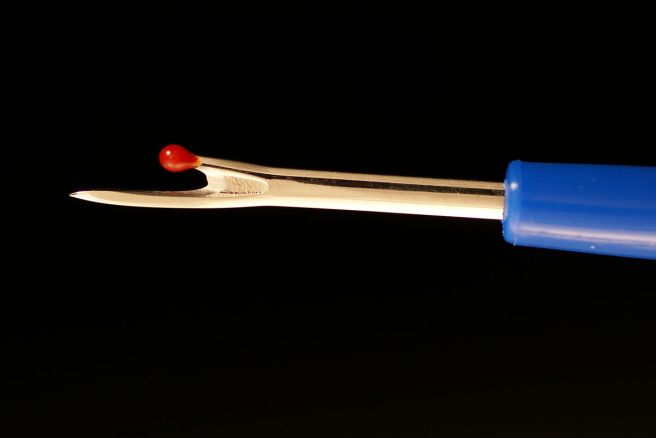Ahhhhhh, sewing on my vintage machine, which never gives me any problems, so named Abacus because I can really count on him. Always there for me to improve my mood. 🙂

Some stitching happened today. Started off that I either lost my prescription glasses out of my purse in the parking lot at work, or they fell out of my purse in my drawer at work. I rely heavily on seeing with them as the no line bifocals really improve small details and I don’t feel so dang blind, LOL.
So a quick run down the street where I keep my inexpensive off the shelf readers. I keep a pair with my longarm, because I don’t know how many times I have been absent minded and just left my prescription glasses behind and then am handicapped enough I cannot thread the needle. Absent minded and blind….a good combo on the way to old town LOL.
A few things in stitching these 4 patch blades I have learned along the way and I thought this was a good opportunity to share with those that struggle with this same issue.
Angles are funny. I can look at it and think that I am squarely sewing, only to find I am scooootched off enough that it will throw the block off during its final construction.
For years I have made alignments with pins. I call it a pin baste, call it whatever you like.
Here we have the two halves of the 4 patch sewn. These go very fast if you chain piece. I chain piece the two halves in succession so when I press they are already together and I do not have to look for a mate. Notice below they are connected with thread.

Next I trim the dog ears, simply with scissors. I also clips the thread holding these together at the same time.

Snip Snip!

Now onto alignment. For years I have stuck a pin at the 1/4 inch seam allowance where the two fabrics meet, making the pin go down through the wrong side of the fabric, repeating for the other half just like this.

The above is time consuming but you can get it spot on if you slow down, take your time, and pin baste. Yup, lots of us quilters do not like using pins, but sometimes the accuracy improvement makes it necessary.

After I have this pin basted with a pin, I fold the two ends up and compare the dog ears on each end. If they match in size, I proceed and know my accuracy is right for points to match perfectly. If they are not perfect I retry.

Once your accuracy is deemed close enough, stitch. I have started pressing my seams open which creates a dog ear on each end that will have to be trimmed. You can opt to press it in the direction which would eliminate the dog ear trimming.
These extra steps sometimes get frustrating and takes the fun out of quick sewing. Then I had a huge lightbulb moment. Matching raw edges which I just trimmed the dog ears from, simply match the seam allowance.

See the funny angle or eye illusion in this picture. The seam allowance is in perfect alignment, but the ends overhang greatly, or sew it seams, LOL! This plays tricks on these eyes, and so just eyeballing it will not work anymore. Kudos to you if you can do it with the naked eye.

Notice where I am pointing with my pin. You will align the edge of that seam allowance with the seam on the above piece. The seam’s raw edge matches perfectly to seam finished edge. Pin baste. So far this is by far the quickest and easiest method for all this weird angle stuff.

Some of these are done with the first method and some with the second method. I found the second method to be most accurate, and easier. The two center diamonds are perfectly nested. The outer two are off by and few threads, and if you take a few steps back you would never notice. It will directly impact the alignment of the next raw edges you sew during phase two the sewing of the 4 patches together.

Above the point is very nicely aligned be the raw edges are offset. This is showing the difficulty I am having while piecing these beauties. The good news is that all of the raw edges at this point are bias, so if they are imperfect, you will be able to ease them in the next step. This is turning out to be very forgiving. Lone Star quilts look so hard, and now that I am working one, I am changing my opinion. I do not recommend this if you struggle with making your points matching in other projects or if you are new to quilting. Your frustration level might be high and it may become a UFO (unfinished object).
And in brainstorming (mentioned in my previous post) for the D9P, here is the backing fabric I so wanted for this but currently do not have enough of.

I supposed I can wait until Good Fortune is quilted, and use the leftovers from it to help finish this. but I really only want one seam for the backing. Perhaps my mind is changing and will make this as a wild sashing for the front. It auditions well with all of this quilt and it pops with color. Perhaps the backing just needs to be a solid black or muted black. I am still brainstorming. When I come across something I see that will work, I will know it, until then I will continue to seek out a solution.
In summary, our eyes can play tricks on us. In my youth and having sticker book fun, the placement of the sticker was so easy. Right where you wanted it, you were able to put it. Now I seem to have an eyeball on the cheek syndrome as it looks perfect before I stick it, and that that perfect place and funny angle after the sticker is stuck IS NOT PERFECT. In fact it is WAY OFF. I assume this is some kind of depth perception problem. You know the kind, when you are hanging clothes on the line and you go to grab the clothes line only to find your eyes have played a trick on you and you are no where close to grabbing it. I recall a tidbit of a George Carling routine speaking of the depth perception and clothes line trick your eyes play on you. Sewing weird angles and the success of this relies on good depth perception, pin basting, and experience of the good, the bad, and the ugly. A direct result of who you used to be, who you are today, and who you will become tomorrow.
Thanks for stopping by and reading my blog!

















































